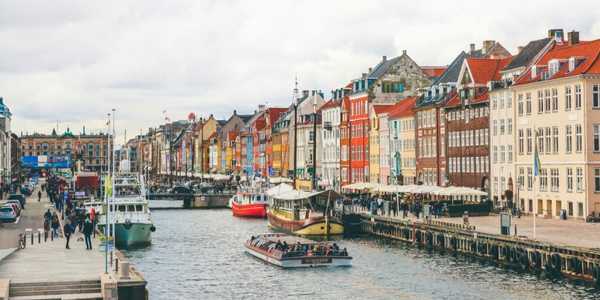Why hurry through your travels when you can savor every moment? Slow travel invites you to experience destinations deeply and meaningfully. This trend emphasizes taking your time and provides benefits like enhanced relaxation and promoting sustainable tourism, making each trip more enriching. Let's explore the concept of slow tourism and its myriad benefits in this article.
Understanding Slow Travel
A travel concept known as slow travel prioritizes quality above quantity. Slow travel encourages visitors to spend more time in fewer locations rather than concentrating on seeing as many tourist attractions as possible. The rise of slow travel meant to create a more meaningful and engaging travel experience by encouraging a closer bond with the destination and its populace.
Differences between Slow Travel and Traditional Tourism

Slow travel and traditional tourism differ significantly in their approach and objectives which are discussed below:
- Pace
Traditional tourism often involves a rapid pace, with travelers moving quickly from one attraction to another to maximize their experience. In contrast, slow travel prioritizes a leisurely pace, allowing more time to explore and appreciate each destination fully.
- Experience
Conventional tourism usually involves visiting well-known sites and crossing things off a list. On the other hand, slow travel places a strong emphasis on immersing activities, such meeting locals and discovering their customs and traditions.
- Impact
Traditional tourism can sometimes lead to negative impacts on destinations due to high visitor numbers and brief stays. Slow travel aims to minimize these impacts by spreading out visits and spending more time in each location, which can help reduce environmental and cultural strain.
Examples of Slow Travel Activities
Slow travel includes various activities designed to enhance your connection with the destination. The most popular are listed below.
- Engaging with Local Culture
Participating in local customs and traditions is a key aspect of slow travel. This might involve attending a local festival, joining a cooking class to learn how to prepare traditional dishes, or taking part in cultural workshops. Such activities offer insights into the local way of life and create lasting memories.
- Exploring at a Leisurely Pace
Slow travelers often explore their surroundings on foot or by bicycle, which allows for a more intimate and relaxed experience. Walking tours, bicycle rentals, and hikes through local nature reserves provide opportunities to observe and appreciate the environment and architecture more closely.
- Supporting Local Businesses
By frequenting local markets, cafes, and shops, slow travelers contribute to the local economy and support small businesses. This not only enhances the travel experience but also helps preserve local crafts and traditions.
- Learning the Local Language
Even basic knowledge of the local language can enhance interactions with residents and provide a deeper understanding of the culture. Slow travelers often make an effort to learn common phrases and greetings, which can lead to more meaningful connections and interactions.
Slow Travel Benefits
Slow travel offers numerous benefits. Let’s dissect them in detail.

1. Cultural Immersion
- Deeper Connection with Local Communities
Genuine ties between tourists and locals are fostered by slow travel. Travelers can engage in local activities, converse with locals, and learn more about the way of life in the area by staying longer in one location. Compared to the surface-level contacts typically encountered on short travels, this prolonged engagement enables deeper exchanges and a broader cultural experience.
- Learning About Local Traditions, Cuisine, and Lifestyle
There is more than just losing oneself in a destination's culture than simply touring its monuments. It entails discovering customs specific to the area, sampling regional cuisine, and comprehending daily living. Travelers can better understand local customs and culinary traditions by taking part in events like festivals or cooking lessons. This first-hand encounter paints a more complete picture of residents' lives.
2. Environmental Sustainability
- Reduced Carbon Footprint Due to Less Frequent Travel
Slow travel helps minimize the environmental impact by reducing the number of flights and long-distance travel. Spending more time at each destination means fewer trips and less reliance on high-emission transport options. Moreover, using buses, trains, or bicycles instead of renting cars or taking taxis reduces carbon emissions. This approach aligns with the principles of sustainable tourism, which aims to lower the carbon footprint of travel.
- Support for Local Economies and Sustainable Practices
Travelers who adopt slow travel practices often support local economies by shopping at markets, dining at local restaurants, and using local services. This support helps sustain small businesses and promotes eco-friendly practices. For example, choosing eco-friendly lodgings or participating in conservation projects helps preserve natural and cultural resources.
3. Personal Well-Being
- Lower Stress Levels Compared to Rushed Travel
The slow pace of travel reduces the stress often associated with tight schedules and constant movement. Travelers can take their time to relax, explore at their own pace, and enjoy their surroundings without the pressure of ticking off a list of attractions. This more relaxed approach contributes to a more enjoyable and stress-free experience.
- Improved Mental Health Through Relaxation and Mindfulness
Taking the time to indulge oneself in a destination can promote mindfulness and relaxation. Activities such as leisurely walks, meditation, and spending time in nature can improve mental health and provide a sense of well-being. Research shows that time spent in natural environments and engaging in relaxing activities can boost mood and cognitive function.
- Opportunities for Personal Growth and Reflection
Slow travel offers ample opportunities for self-discovery and personal growth. By stepping out of one’s comfort zone and engaging with new cultures and environments, travelers can gain fresh perspectives and insights. Reflecting on these experiences often leads to increased self-awareness and personal development.
4. Economic Benefits
- Supporting Local Businesses and Artisans
Slow travelers typically choose to spend money at local businesses, such as family-owned restaurants, markets, and craft shops. This financial support helps sustain small enterprises and preserves traditional crafts and trades. It also guarantees that tourism revenue benefits the community directly rather than large, international chains.
- Economic Impact on Small Communities
By staying longer and spending more in small towns or rural areas, slow travelers contribute to the local economy. Their spending supports local jobs, infrastructure, and services, helping to maintain the vitality of small communities. This can be especially important in regions where tourism is a major economic driver.
Conclusion
In essence, slow travel encourages you to have an intentional and attentive experience of the world. One of the major benefits of slow tourism is that it enhances your vacations while simultaneously promoting local businesses and environmental sustainability. Using this strategy, you can make every trip a meaningful and memorable experience.
